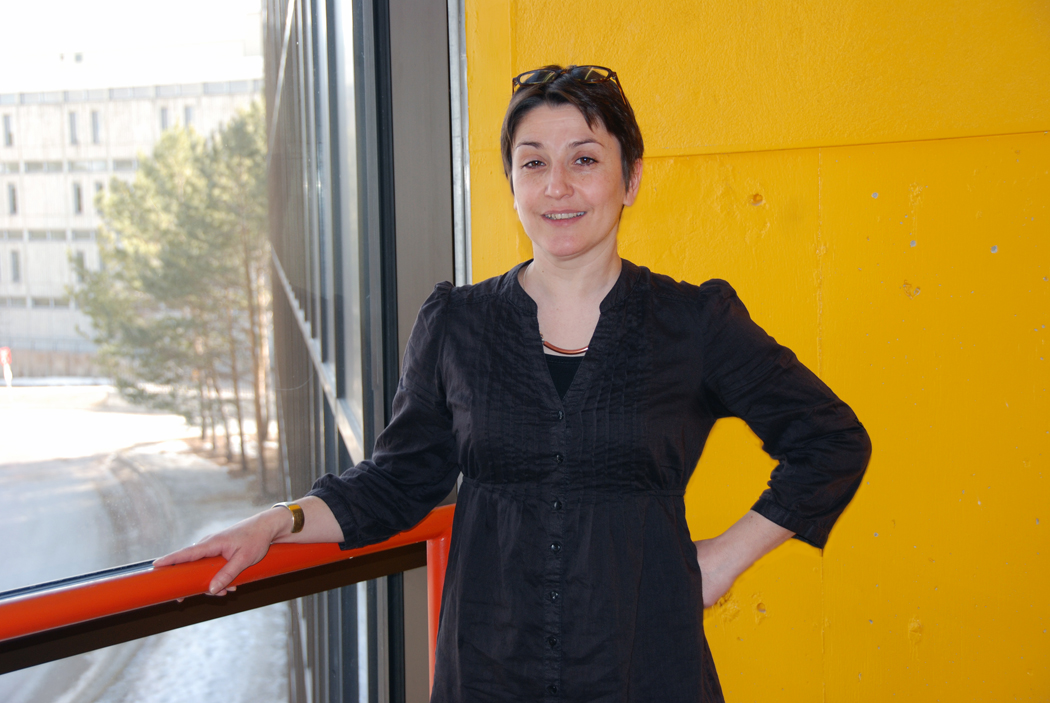
Stephanie Portet, associate professor, department of mathematics, Faculty of Science.
Faculty Profile: Stephanie Portet
Stephanie Portet got into science and mathematics because “it was the only thing she was able to do,” she says, smiling. Not the type for long-term plans, she’s made a habit of simply saying “yes” to opportunities when they arise —to an extraordinary extent, including that of postdoc-ing and then teaching in a country in which she didn’t speak the language. (She recounts that her partner said to her, after she was offered a position, “You realize we can’t speak English?” to which she replied, “I’m sure it will be fine!”)
Immigrating to Canada from her native France, Portet spent several years in Edmonton before accepting a position in mathematics at the U of M, which she and her partner decided upon because it offered him a position as well.
Over the years, she’s used mathematical modeling over a number of disciplines, something she greatly enjoys. Much of her work is interdisciplinary, primarily math-biology. Perhaps adeptness across the disciplines is also what helps her to find the necessary analogies to elucidate her work for students. Explaining it to a severely math-challenged layperson like me, she resorted to analogies from child’s play, but not without delight. It seems even the simplest analogy brings her joy and satisfaction. “What I’m doing is Lego,” she says with a laugh.
In fact, the research in which Portet is engaged is a first in mathematical modeling. She’s found a unique niche, “acting as another type of microscope” for the cell structure, as she puts it.
Her work is rooted in cell biology but requires a multidisciplinary approach that encompasses different domains such as mathematical biology, biophysics and image analysis for research about the complex but dynamic scaffolding or skeleton contained within a cell’s cytoplasm, called the cytoskeleton.
According to Portet, math modeling is “translating a problem into a new language,” and her research goes into understanding the relationship between structure and function in the cell, in order to “develop a computational and mathematical modeling framework to study the shaping and reorganization processes constituting the structural pathways of cell signalling.”
The field is relatively new to mathematical modeling, and therefore it gives her the “luxury of being wrong,” says Portet. Because it’s such a new area, “the goal is to find more data.”
And learning is else something she values in her work. “The freedom to discover and start new prospects is important to me in my work. I’m paid for learning new things — and that I like,” she says.
However, sometimes when you are in the work, she says, it feels like you are not getting anything done. Apparently mathematical modeling research is nothing at all like administrative work, which has been added to her plate. There, she says, at least she can check things off her list. And because, perhaps because of that, she oddly enough enjoys administrative work — also for the human aspect of it, she says. “I can’t stay alone for too long doing research, especially when nothing is advancing.”
Immigrating to a country where they knew no one, the assistant professor and now-associate head of the mathematics department says, “We had to smile when we called home and say everything was fine, and work harder.” Teaching and interaction with students helped them to learn the language. Eventually they made friends. And they worked hard.
“Sometimes you feel like you haven’t done anything, but then when you look back over your shoulder, you realize that you have, after all, gotten some things done,” Portet says. She sounds a little surprised herself.
“We’ve done a lot in a short time,” she says.
Q + A with Stephanie Portet
Something that inspires you today: Spring is coming back.
What activities do you engage in outside of work? Art classes at the WAG: sculpture, pottery, drawing, painting, mosaic.
Best place you’ve visited and why: Banyuls sur mer (France) — Best unknown little paradise and very good memories. New York — a kid’s dream and an old song by a French band named “Telephone.”
A book you’ve read and enjoyed recently? John Cardinal mystery series by Giles Blunt.
Favourite piece of music or film: An album entitled “Bleu Petrole” by Alain Bashung.
Faculty Profile is a regularly appearing column that features faculty of the university in the context of their research. This article first appeared in the May 23, 2013 edition of The Bulletin.






